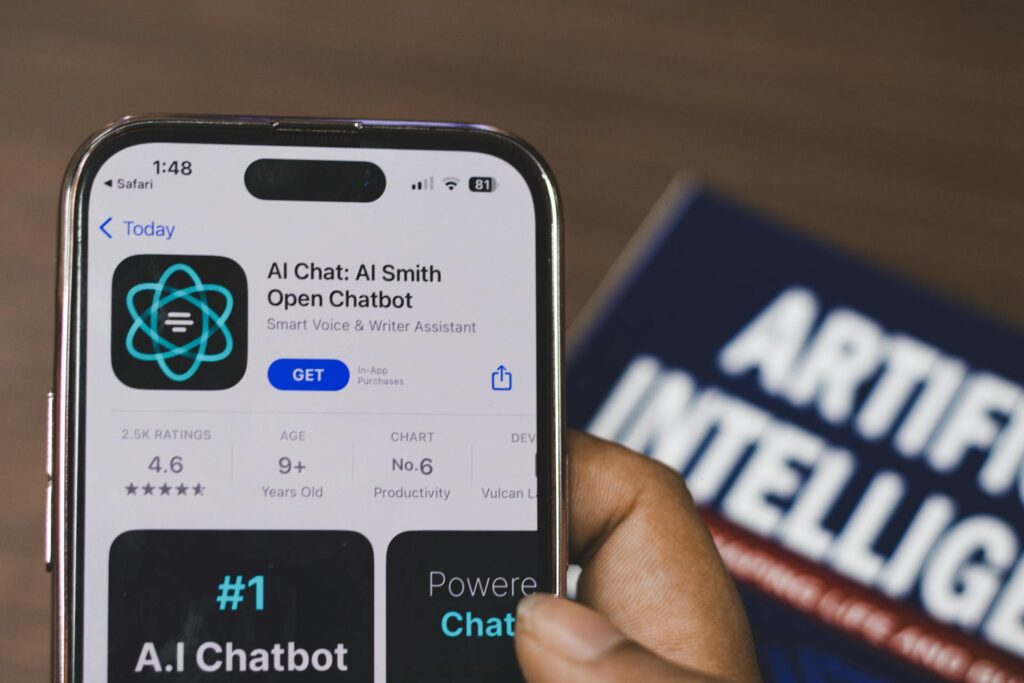Artificial Intelligence (AI) is transforming industries, reshaping economies, and redefining how we interact with technology. From its inception to its current prominence, AI has evolved rapidly, driven by innovation, investment, and a vision for a smarter future.
This article explores how AI was developed, highlights popular AI solutions, breaks down the costs of building AI, examines its future and underlying agenda, and identifies promising AI startups for investment.
Additionally, we’ll discuss how AI startups can apply to YTC Ventures.

How AI Was Made: A Brief History
AI’s roots trace back to the mid-20th century, built on decades of theoretical and technological advancements:
- 1950s–1980s: The Foundations
The concept of AI emerged in 1956 at the Dartmouth Conference, where pioneers like John McCarthy coined the term “artificial intelligence.” Early efforts focused on symbolic AI, using rule-based systems to mimic human reasoning. Alan Turing’s work, including the Turing Test, laid the groundwork for machine intelligence. Early systems like the Logic Theorist (1955) and expert systems in the 1980s tackled specific tasks but were limited by computational power and data availability. - 1990s–2000s: Machine Learning Takes Center Stage
The rise of machine learning (ML), fueled by algorithms like neural networks and support vector machines, shifted AI toward data-driven models. IBM’s Deep Blue defeating chess champion Garry Kasparov in 1997 marked a milestone, showcasing AI’s potential in specialized tasks. Increased computing power and data availability paved the way for broader applications.

- 2010s–Present: Deep Learning and Big Data
The AI revolution accelerated with deep learning, powered by neural networks and vast datasets. Breakthroughs like AlexNet (2012) for image recognition and advancements in natural language processing (NLP) transformed AI capabilities. Companies like Google, Microsoft, and OpenAI leveraged cloud computing, GPUs, and big data to develop sophisticated models like BERT, GPT, and DALL-E. - Today, generative AI, capable of creating text, images, and more, dominates the landscape, driven by massive investments and open-source frameworks like TensorFlow and PyTorch.
AI’s rise was fueled by three key factors: advancements in algorithms, exponential growth in computing power (e.g., NVIDIA GPUs), and access to massive datasets. These pillars continue to drive AI’s evolution.
Popular AI Solutions in 2025
AI has permeated nearly every industry, offering solutions that enhance efficiency, personalization, and innovation. Here are some of the most popular AI applications in 2025:
- Generative AI Platforms
- Examples: OpenAI’s ChatGPT, Anthropic’s Claude, Writer’s Palmyra
- Use Case: These platforms generate human-like text, images, and code, powering applications in content creation, customer support, and software development. Writer, for instance, helps enterprises like Spotify and Qualcomm automate marketing content, saving millions in labor costs.
- Impact: Businesses use generative AI to streamline operations, reduce costs, and enhance customer experiences, with 95% of companies reporting positive ROI from AI tools.
- Healthcare AI
- Examples: Bunkerhill Health, Abridge, Sully.ai
- Use Case: AI algorithms aid in early disease detection (e.g., heart disease, pancreatic cancer), medical imaging analysis, and transcription of patient-clinician conversations. Bunkerhill Health, backed by Sequoia and YC, collaborates with institutions like Stanford to develop FDA-cleared algorithms.
- Impact: Healthcare AI reduces diagnostic errors, speeds up processes, and saves billions in labor costs annually.
- Financial AI
- Examples: Agentive, Truewind, Lendable
- Use Case: AI streamlines audit processes (Agentive), automates accounting (Truewind), and approves loans faster (Lendable). Truewind, backed by Y Combinator, serves over 100 customers, including accounting firms, by automating data categorization.
- Impact: Financial AI enhances accuracy, reduces manual workloads, and improves regulatory compliance.
- AI for Software Development
- Examples: GitHub Copilot, MagiCode, Benchify
- Use Case: AI-powered tools like GitHub Copilot and MagiCode generate code snippets, review code, and fix bugs, boosting developer productivity. Benchify automates fixes for LLM-generated code, saving time in regulated industries.
- Impact: AI reduces development costs by up to 66% and accelerates product delivery.
- Logistics and Supply Chain AI
1950s–1980s: The Foundations
Simple AI Models: Basic models, like chatbots or predictive analytics tools, start at $5,000–$50,000.

These solutions demonstrate AI’s versatility, addressing challenges across sectors while driving significant cost savings and innovation.
Cost to Make AI in 2025
Building AI solutions involves significant investment, influenced by project complexity, infrastructure, and talent. Here’s a breakdown of costs in 2025:
- Development Costs
- Simple AI Models: Basic models, like chatbots or predictive analytics tools, start at $5,000–$50,000.
- Complex AI Systems: Deep learning models, such as those for generative AI or autonomous systems, range from $50,000 to over $500,000, depending on features like NLP or image recognition.
- Custom vs. Pre-built: Custom solutions cost more due to tailored development, while pre-built solutions (e.g., AWS Bedrock, Microsoft Azure AI) range from $0–$40,000 annually.
- Hardware Costs
- Personnel Costs
- Ongoing Maintenance
- Case Studies
- Writer: Built its Palmyra model for $700,000, significantly less than OpenAI’s $100 million for GPT-4, showcasing cost-efficient approaches.
- Microsoft: Invested $120 billion in AI, including Azure AI Services, with a $5 billion annual run rate.
- Startups: Small startups can leverage open-source frameworks like TensorFlow to reduce costs, with initial investments as low as $5,000 for basic models.
The cost of AI is doubling every nine months due to increasing computational demands and talent competition, but cloud solutions and open-source tools are making AI more accessible to startups.

Strategic planning, such as prioritizing high-value use cases, can optimize ROI, with 95% of businesses reporting positive returns from AI investments.
The Future of AI
By 2030, AI is expected to contribute $15 trillion to the global economy.
Key trends shaping its future include:
- Toward Artificial General Intelligence (AGI)
- Companies like xAI and DeepMind are pursuing AGI, enabling machines to perform diverse tasks at human-level competence. This could revolutionize industries like education and research.
- Cost Optimization
- Advances in model compression, edge computing, and specialized chips (e.g., NVIDIA H200) will reduce training costs by 20–40%, making AI accessible to smaller firms.
- Responsible AI
- Ethical frameworks and regulations will prioritize transparency, bias mitigation, and privacy. The EU’s AI Act and U.S. guidelines will enforce compliance, especially in healthcare and finance.
- AI in Physical Systems
- Robotics and autonomous systems will expand, with startups like Figure and Agility Robotics integrating AI into manufacturing and logistics.
- Sustainability Focus
- AI’s energy consumption, equivalent to powering small countries, will drive demand for green computing solutions, such as energy-efficient data centers.
- Global Adoption
- Emerging markets like India and Africa will see rapid AI growth, with startups leveraging low-cost talent and local data to build tailored solutions.

The future balances transformative potential with challenges like ethical governance and environmental impact.
The Agenda Behind AI
AI’s development is driven by diverse stakeholders with overlapping goals:
- Corporate Dominance
- Tech giants like Microsoft, Google, and Amazon aim to integrate AI into every business function, monetizing through cloud platforms (e.g., Azure AI, $5 billion run rate). Their agenda is market leadership and revenue growth.
- Startup Disruption
- Startups focus on niche innovations, such as healthcare diagnostics or code generation, aiming to capture specific markets. Their agenda is rapid scaling and acquisition by larger players.
- Ethical and Societal Goals
- Organizations like xAI prioritize advancing human knowledge, while governments push for AI to address global challenges like climate change and healthcare access. However, concerns about bias, privacy violations, and job displacement drive calls for regulation.
- Global Competition
- Nations like the U.S., China, and the EU compete for AI supremacy, investing billions in research and infrastructure. China’s AI market, valued at $20 billion in 2025, aims to lead by 2030.
The agenda blends innovation, profit, and societal impact, with responsible AI development as a growing priority to address risks like misinformation and inequality.
AI Startups to Invest In
The AI startup ecosystem is thriving, with $75 billion raised globally in 2024.
Here are top AI startups for investment in 2025:
- xAI
- Focus: Accelerating human discovery with AI (Grok)
- Funding: $6 billion, valued at $24 billion.
- Why Invest: Its mission-driven approach and focus on generalized AI position it for long-term impact.
- Anthropic
- Focus: Safe AI systems (Claude)
- Funding: $8 billion, backed by Amazon and Google.
- Why Invest: Emphasis on ethical AI and enterprise adoption ensures stability.
- Figure
- Focus: Humanoid robotics with AI
- Funding: $850 million, valued at $2.6 billion.
- Why Invest: Partnerships with OpenAI and applications in logistics make it a high-growth prospect.
- Cohere
- Focus: NLP and text generation
- Funding: $500 million, valued at $2.2 billion.
- Why Invest: Its API-driven model serves enterprises like Spotify, with strong revenue potential.
- Glean
- Focus: Enterprise search and knowledge management
- Funding: $260 million, valued at $2.2 billion.
- Why Invest: Its AI-powered search solutions address growing demand for workplace efficiency.

These startups, backed by top VCs like Sequoia and Andreessen Horowitz, offer diverse exposure to AI’s growth. Investors should prioritize companies with proven traction and scalable business models.
AI Startups: Apply to YTC Ventures
YTC Ventures, supports AI startups through investment banking, deal-matching, and B2B sales services. Operating in India, the UK, Estonia, and the USA, YTC Ventures connects innovative startups with global investors.
Here’s how AI startups can apply:
- Explore Opportunities
- Visit www.ytcventures.com to learn about investment services and the business opportunity listing platform.
- Submit Your Proposal
- Prepare a pitch deck detailing your AI startup’s technology, market fit, traction, and financials. Email it to kks@ytcventures.com
- Email to b2b@ytcventures.com for B2B inquiries.
- Due Diligence
- YTC’s team evaluates submissions for credibility and scalability, ensuring alignment with investor priorities.
- Access Funding and Networks
- Approved startups gain access to YTC’s global investor network and strategic guidance to accelerate growth.
- YTC Forum https://ytcventures.com/community/
- Secure Transactions
- YTC recommends trusted banking partners for secure funding processes, ensuring compliance and transparency.
AI startups in generative AI, healthcare, or robotics are ideal candidates for YTC’s portfolio. Early-stage ventures with innovative solutions and strong teams are encouraged to apply.
Conclusion
AI’s journey from theoretical roots to a global force has been driven by algorithmic innovation, computational power, and data abundance. In 2025, solutions like generative AI, healthcare diagnostics, and logistics optimization are transforming industries, with development costs ranging from $10,000 to millions. The future promises AGI, cost efficiencies, and ethical advancements, but challenges like regulation and sustainability remain.
The AI agenda blends corporate goals, startup innovation, and societal benefits, with responsible development at its core.For investors, startups like xAI, Anthropic, and Figure offer high-growth opportunities.
YTC Ventures, provides a platform for AI startups to secure funding and scale globally.
Visit www.ytcventures.com to apply and join the AI revolution. As AI reshapes the world, strategic investments and partnerships will drive its transformative potential.

Comments